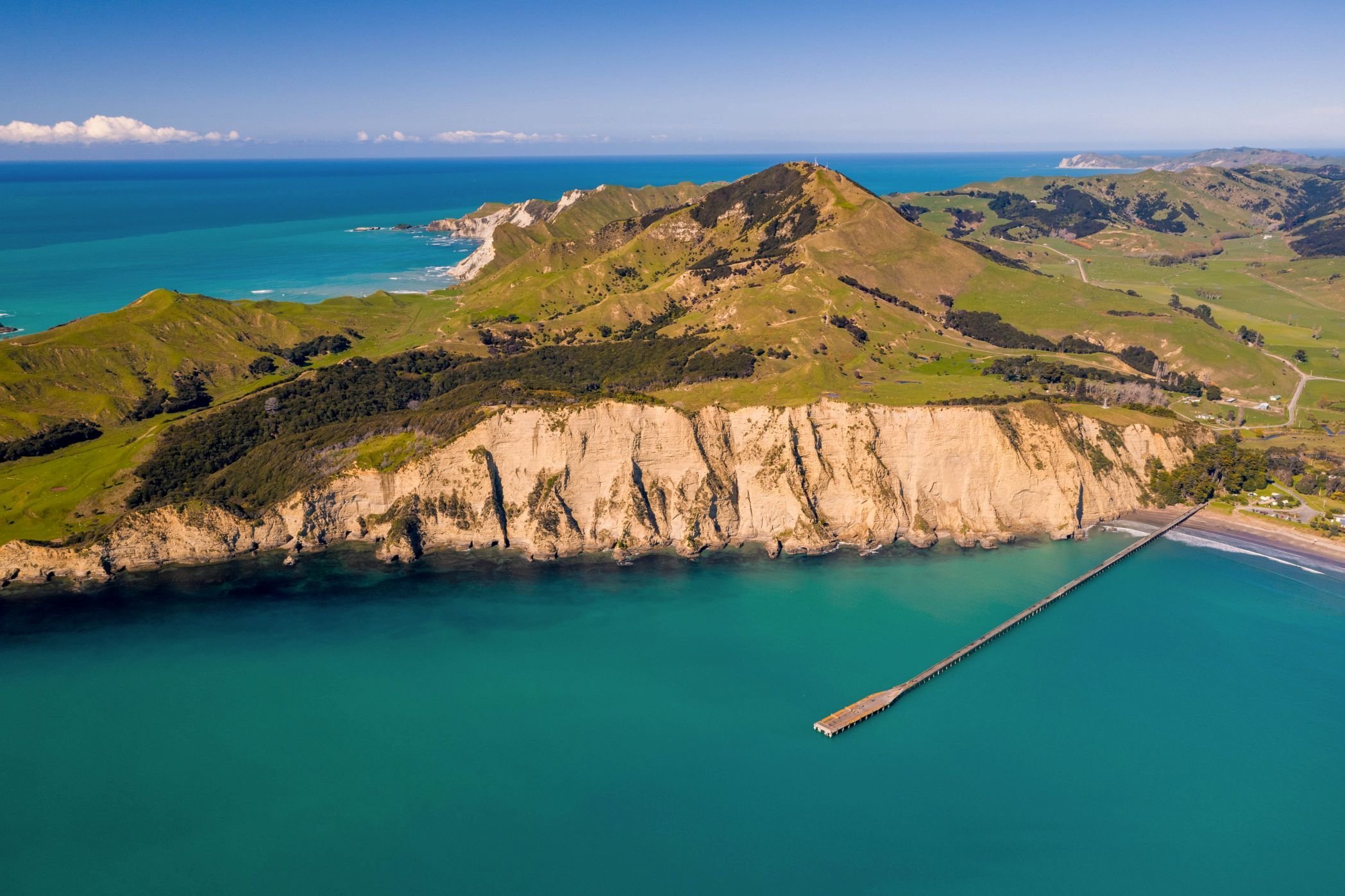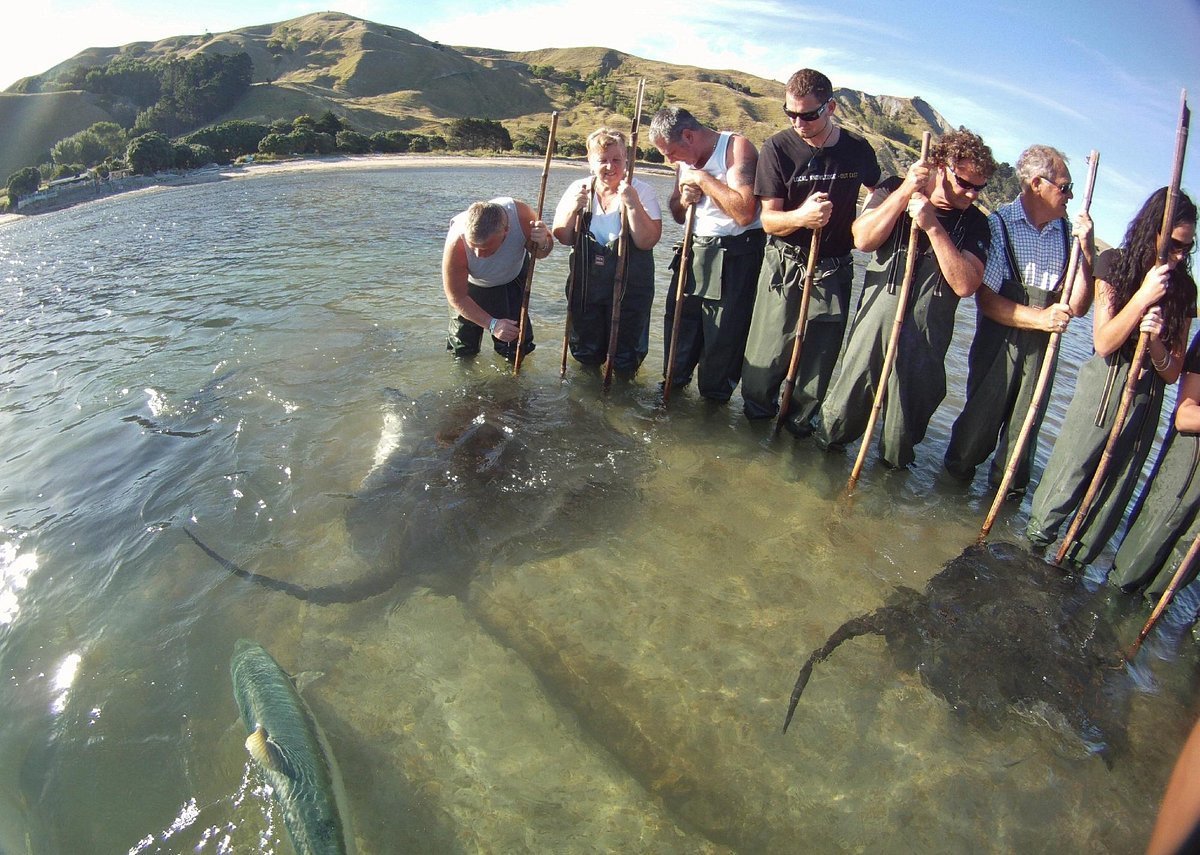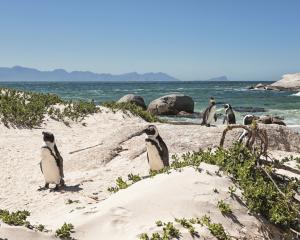
Half an hour south of Gisborne, I drove to Muriwai, in the shadow of Young Nick’s Head.
This is the starting point for a rail adventure to remember, with Gisborne Railbikes. Under the command of the ingenious Geoff Main, like a lightbulb moment, he first conceived his idea of railbikes in the middle of the night.
This totally novel, distinctive cycle experience uses non-operating railway lines that previously connected Gisborne with Wairoa, before KiwiRail pulled the plug on services in 2012, following a monstrous slip.
After years of planning, negotiations and designs, Main secured a lease on the track from KiwiRail and launched his positively unique cycling adventure six years ago. He doesn’t know of any other place on Earth where decommissioned railway lines have been leased for side-by-side cycling.
These purpose-built railbikes are joined together with steel bars, enabling you to rock the rails with your buddy — and it’s impossible to fall off. You don’t even need to steer or balance the railbike thanks to its bespoke-designed guide wheels that will keep you firmly on track. All you have to do is pedal — and because they’re e-bikes, it’s a doddle.
Under the blazing sun, I joined Main for a guided ride on the Beach Loop, which is a 32km return circuit, tootling south from Muriwai, skimming the coastline, flanked by scenic bush-clad valleys and interspersed with growing fields, awaiting the summer harvest.
Main pointed out to me the curious presence of numerous fruit trees that have flourished immediately alongside the tracks. These sprang into life from the remnants of stone fruit and apple cores being biffed out of the window by passengers on passing trains over the decades.
The route ends close to the Wharerata Rd lookout, where a monstrous slip at Whareongaonga, caused by flooding three years ago, severed the mothballed railway line on its path to Wairoa. Geotech engineering studies have deemed the hillside too unstable for a railway line to be reinstated, so it is now the end of the line.
You’ll love the rich variety of scenery on this ride — from open farmland and orange groves to sparkling ocean views and the lush balm of natural "green" tunnels, artfully formed from the verdant trackside canopy.

Main quipped that some guests have suggested he install a sensor-triggered train’s whistle and blaring headlight, to jolt unsuspecting riders as they journey through the tunnel.
Barely minutes after he mentioned that, suddenly a bright headlight uncannily appeared out of the darkness — and it wasn’t some trickery on Main’s part! A couple of farmers on a quadbike were taking an unapproved short-cut through the tunnel, hastily electing to get off the tracks when they spotted our bike headlights closing in on them. It was an unexpected frisson to cap off the tour.
Be sure to add a Gisborne Railbike Adventure to your Tairāwhiti check-list (www.railbikes.nz)
For a complete change of scenery, 30km northwest of Gisborne in Ngatapa, Eastwoodhill is home to the National Arboretum of New Zealand. Immerse yourself in 135ha of verdant, botanical wonder.
Founded in 1910 by William Douglas Cook, his life’s work was the creation of a giant collection of northern hemisphere temperate climate zone trees in New Zealand, through the importation of thousands of trees from overseas nurseries.
During the Cold War era, he grew increasingly determined to ensure northern hemisphere species threatened by nuclear war would live on at Eastwoodhill.
As his health declined, he sold Eastwoodhill to Bill Williams, who would later establish and donate the arboretum as a charitable trust to safeguard its future.
Of all the arboreta of the southern hemisphere, Eastwoodhill Arboretum is believed to boast the largest collection of trees of the temperate climate zone of the northern hemisphere. Currently, 170 species at Eastwoodhill are on the world endangered species list.
This arboreal ark is a stirring safe haven for threatened and endangered trees. Over 25,000 species of exotic and native trees, shrubs and climber plants unfurl their majesty across its grounds. Prized specimens include blue atlas cedars, coastal redwoods, Michoacan pines, scarlet oaks and the highly endangered Serbian spruce which hails from Bosnia.
The arboretum features a variety of spaces, from the formal gardens at Homestead Garden to the Cathedral — formed by the grand cross-shaped lay-out of Eucalyptus. It’s a popular wedding spot.
There’s also a Native Reserve and my guide remarked that Eastwoodhill brims with Kererū. They get so drunk binging on berries they will often be seen dangling upside-down from the branches.
Eastwoodhill hits its prime in autumn, with all its oaks, maples, liquidambars, ash and ginkgo trees ablaze in autumnal glory.

I met up with Jock and Victor Walker, who casually led me on a riveting walkabout, spilling forth with stories and history with an understated, salt-of-the-earth charm.
After admiring the remarkable length of the Tolaga Bay Wharf, a century old landmark stretching for 660m, we set off on a fabulous hike on the Cooks Cove Walkway.

As Victor proudly explained to me, after the Endeavour crew’s most unfortunate skirmish with Māori, after coming ashore in Gisborne, the reception was far more harmonious in Uawa/Tolaga Bay several days later. Word had spread that Tupaia, the famed Tahitian navigator and translator was aboard the Endeavour, and the locals greeted him and the Endeavour crew with affection and compassion for the misunderstanding that had occurred in Gisborne.
As Victor joked, Tupaia may well have fathered many children while ashore — such was his stature. East Cape high chief Hinematioro gifted Cook and Tupaia a carving or pou from her whare. As Victor noted, she was a noble chief of the highest rank, “our female Sovereign”.
The carving represents the first gift accorded to Europeans by Māori and had been off-shore since 1769. Initially it was handed over to the Natural History Museum, before later being gifted to the Tubingen University Museum in Germany.

Ever dreamed of wading with stingrays? I was feeling somewhat pensive about this assignment, but I soon discovered why Dive Tatapouri’s wild stingray tours are such a smash hit.
Dean and Chris Savage established and have nurtured this acclaimed New Zealand eco-experience on the shallow reef at Tatapouri Bay for 24 years. After being kitted out in waders and armed with bamboo walking sticks, and learning how to shuffle our feet so as not to step on a stingray, our group ventured out into the knee-deep waters for an indelible reef ecology tour.

I anchored my hand on the rock, just below the water's surface and a ray shimmied its velvet underbelly over my fingers. Like a whip-smart Dyson vacuum cleaner, the fish was vigorously hoovered up by the passing ray, as if I was a drive-by restaurant.
Blindingly beautiful, why not linger for the night at Tatapouri Bay, caressed by the golden sands of the beach and the opera of the ocean?

Watching a famed East Coast sunrise from this perch is my idea of paradise, as is the elemental drama of the ocean. In the early evening, strong westerly winds turned the sea into an angry tempest, churning, frothing and crashing ashore with quite the attitude.
Goggled-eyed, I gazing in awe at nature’s might from my enormous Zen Cabin window, just metres from the high tide line. After taking my fill of the theatrically compelling water show, I drifting off into a deep sleep, lulled by the unrelenting, all-powerful rhythm of Tangaroa.













